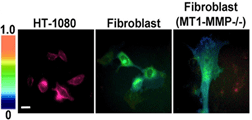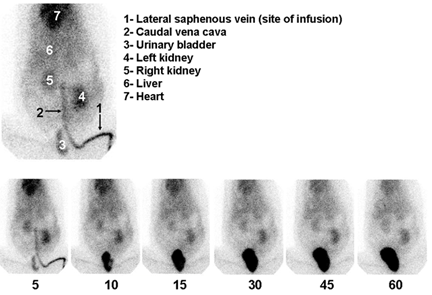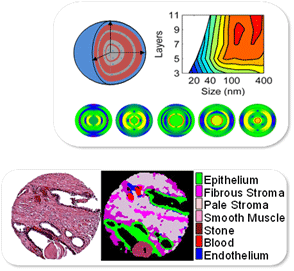Research Examples
Nanostructures, such as particles, tubes, wires, and liposomes, all have two unique features: (1) their small size which allows them to enter cells, (2) their ultra large surface to volume ratio allows them to be functionalized with appropriate ligands so that they can bind with specific receptors at target sites, and with necessary drugs so that they can be delivered at specific sites after receptor binding or external energetic stimulation. Several nanotechnology applications have already exploited these features effectively.
Effective application of nanotechnology to cancer treatment needs formal training of both nanoscience and cancer biology. In this training center, the graduate students and the post docs are trained to employ nanotechnology for
- detection and therapeutics of cancer at the pre or early phase of metastasis
- exploring the physical mechanisms of metastasis
- detecting cancer markers during tumor growth using silicon nanowires and polymeric nano discs
- imaging tumors using nano particles and drug delivery
- testing nanotechnology in animal models towards targeted imaging for drug delivery
 |
Silicon Based Biochips and Integrated Nano Devices for Detection Silicon BioChips with top down fabricated nanowires for detection of cancer proteins. |
 |
Nanodiscs for Imaging and Intervention Schematic image of a nano-disc that can be used to anchor membrane bound proteins. |
 |
Imaging for Cancer Diagnosis MT1-MMP is a cell membrane-bound matrix metalloproteinase which helps the cells to degrade the surrounding tissue and invade neighboring areas. The high activity of MT1-MMP can hence cause metastasis. In this image, our molecular biosensor can precisely measure the MT1-MMP activity and determine the metastatic potential of the cells. Therefore, the biosensor can be applied to detect metastatic cells and provide powerful diagnosis/prognosis tools. |
Imaging for Optimal Therapy Chemical imaging for cancer pathology presents a new means to image cancers and determine optimal therapy. Probe-based (Raman scattering) and label-free (infrared absorption) approaches are shown here |
|
Using Nanoparticles with Drugs to Enhance Immune System against Pediatric Osteosarcoma Biodistribution of bone-seeking nanoparticles when administered to dogs with cancer. Top image: 3-minute dynamic study. Bottom images: serial static study demonstrating the biologic fate of nanoparticles as a function of time. |
 |


